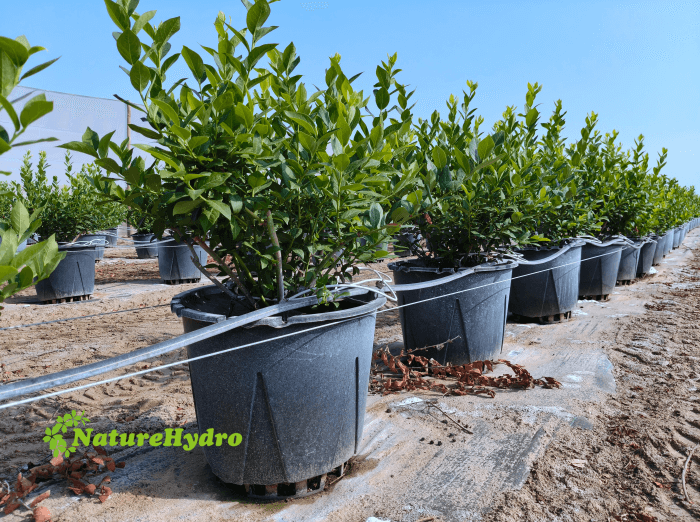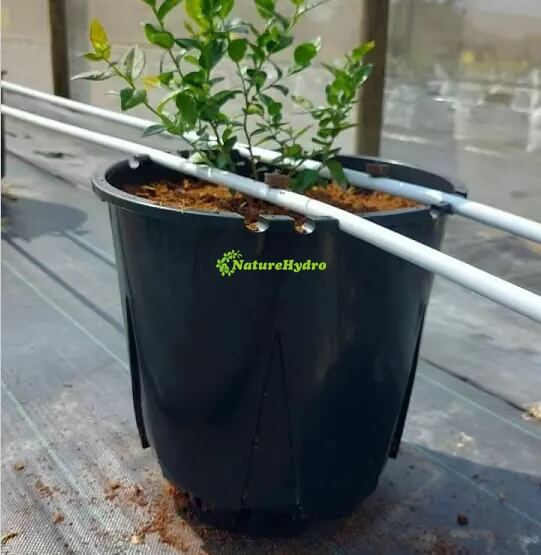Do Container-Grown Blueberries Require Drainage Holes?
14, May 2025
48
Blueberries are a popular fruit among home gardeners and commercial cultivators alike, appreciated for their rich antioxidant content, sweet-tart flavor, and suitability for compact growing environments. As the demand for locally grown and home-harvested fruits continues to grow, many gardeners are turning to container cultivation as a flexible, space-saving solution. However, cultivating any fruit in a container demands close attention to the details of soil, water, and container selection. One question that frequently arises is whether drainage holes are essential when growing blueberries in containers. While it may seem like a minor detail, the presence—or absence—of drainage holes can have a profound impact on the plant's health, productivity, and longevity.
At first glance, a container may simply appear to be a vessel for holding soil and plants. But the design and construction of the container play a pivotal role in plant development. Blueberries, with their shallow root systems and sensitivity to overwatering, are particularly vulnerable to improper container conditions. To understand why drainage holes matter, it is necessary to explore how water behaves in containers, how blueberries absorb moisture, and what happens when excess water accumulates without a means of escape.
Water, while essential for all plant life, can also be a silent killer when mismanaged. In a closed system like a container without drainage, excess water has no route to exit. This leads to waterlogged soil conditions, which drastically reduce the amount of oxygen available to plant roots. Oxygen is just as critical to plant roots as water and nutrients. When roots are deprived of air, they begin to suffocate, weaken, and ultimately rot. In blueberries, this process is even more dangerous due to their preference for moist but well-aerated, acidic soil. Unlike some hardy plants that can tolerate fluctuations in soil saturation, blueberries demand a balance that mimics their native habitat—often forested areas with sandy, fast-draining soil enriched by decaying organic matter. Replicating such conditions in a container without proper drainage is nearly impossible.
Drainage holes serve as safety valves in this context. When rain or irrigation water is added to the container, any excess that the soil cannot absorb will naturally exit through these holes. This process prevents standing water from collecting at the bottom of the pot. While it might not be visible from the surface, water pooling beneath the soil can create anaerobic conditions, leading to fungal growth, root diseases like Phytophthora and Pythium, and eventually the collapse of the plant. These conditions are worsened by warm temperatures, where high humidity in the root zone encourages pathogens to multiply rapidly. Thus, drainage holes are not merely convenient—they are critical to sustaining the health of a container-grown blueberry plant.
Another crucial consideration is the type of soil mix used in blueberry cultivation. Blueberries thrive in acidic soils with a pH range of 4.5 to 5.5. To maintain these conditions in a container, growers often use a mixture of peat moss, pine bark, and perlite. While these components promote acidity and drainage, they can only function effectively if excess water can leave the container. Even the most well-draining mix becomes saturated over time if confined in a sealed container. Drainage holes ensure that the growing medium retains its intended structure and porosity, allowing roots to breathe and nutrients to remain available.
There is also a misconception among some gardeners that adding a layer of gravel or rocks at the bottom of a pot will substitute for drainage holes. However, this approach often backfires. Rather than facilitating water movement, it can create a perched water table—a zone of saturated soil above the gravel layer—where water collects and lingers. This paradox occurs because water does not move easily between soil and gravel due to differences in pore size. Instead of draining down, water accumulates above the barrier until saturation forces it to move. This undermines the very purpose of trying to improve drainage. Thus, the most effective method for managing water in container-grown blueberries remains the simplest: providing direct drainage through holes at the base of the container.
In climates where rainfall is frequent or unpredictable, drainage holes also act as a safeguard against environmental variables. Imagine a sudden summer storm flooding containers left outdoors. Without a way for water to drain, even a brief downpour can drown blueberry roots. Containers with drainage holes allow for rapid recovery from such events, preventing long-term damage. Furthermore, as climate change contributes to erratic weather patterns—bringing longer dry spells followed by intense rains—drainage becomes an essential part of any resilient growing system. Growers must prepare not only for drought but also for deluge, and drainage holes are a fundamental design response to that challenge.
Aside from the practical implications, there is also a psychological benefit to proper drainage. Gardeners are more likely to water responsibly when they know excess water can escape. This confidence reduces the tendency to under- or overwater out of fear, leading to more consistent care and better outcomes. Additionally, the physical act of checking drainage—observing water flow from the bottom of the container—can become a useful feedback mechanism. It helps growers monitor soil saturation and adjust irrigation practices accordingly. This interaction between gardener and plant, facilitated by container design, strengthens the intuitive understanding of a plant's needs, leading to more attentive cultivation.
Moreover, the absence of drainage holes often coincides with other design flaws in decorative pots. Many ornamental containers prioritize appearance over function, lacking ventilation, insulation, or appropriate volume for root growth. Using such pots for blueberries can be detrimental unless modifications are made—drilling holes, using inner nursery pots with drainage, or avoiding them altogether for production purposes. The aesthetics of a container should never compromise the basic physiological requirements of the plant. For serious growers, utility must come first.
Even in controlled environments like greenhouses or indoor setups, where every factor from light to temperature is meticulously managed, drainage remains non-negotiable. Precision irrigation systems like drip lines or wicking mats are only effective when paired with drainage infrastructure. Without it, salt buildup from fertilizers and irrigation water becomes another risk. Over time, accumulated salts can alter the pH balance of the growing medium, burn roots, and interfere with nutrient uptake. Drainage holes allow for periodic flushing of the medium, resetting the chemical environment and preserving the long-term viability of the container system.
In commercial blueberry production, especially in high-density container systems or vertical growing setups, drainage becomes an issue of scalability as well. If one pot in a hundred lacks drainage, it could compromise an entire row through pathogen spread or structural failure. Engineers and horticulturalists design container systems with redundancy in mind, often including both bottom and side drainage, gravel reservoirs, and elevated platforms to prevent any part of the system from being waterlogged. These systems are tested under a variety of conditions to ensure uniform drainage, emphasizing just how fundamental this feature is to reliable production.
There are also economic implications. Losing a mature blueberry plant to root rot is not only discouraging—it’s costly. Replacement takes time and resources, and in a commercial context, it can affect yield forecasts and revenue. Investing in proper containers with drainage from the outset is far more economical than replacing plants or remediating damaged soil later. In this sense, drainage holes are an investment in risk management, safeguarding both the crop and the grower’s bottom line.
Some innovators have developed self-watering containers with built-in reservoirs and passive wicking systems. While these offer convenience, they are only viable if the reservoir includes an overflow outlet—essentially a form of drainage hole. Without such a feature, even sophisticated containers risk becoming saturated. The principles of water movement and root health apply regardless of how modern the design may be. No container, however advanced, can ignore the need for drainage.
In conclusion, drainage holes are not optional when cultivating blueberries in containers. They are a foundational component of healthy container gardening, integral to water regulation, root respiration, disease prevention, nutrient balance, and overall plant vitality. From home growers to commercial producers, understanding and respecting the role of drainage is key to unlocking the full potential of container-grown blueberries. Far from being a minor detail, it is a matter of life and death for the plant—a principle rooted in both science and practice. For those seeking lush foliage, abundant fruit, and a thriving blueberry crop, the answer is clear: drainage holes are not just recommended—they are absolutely essential.
share Share now













